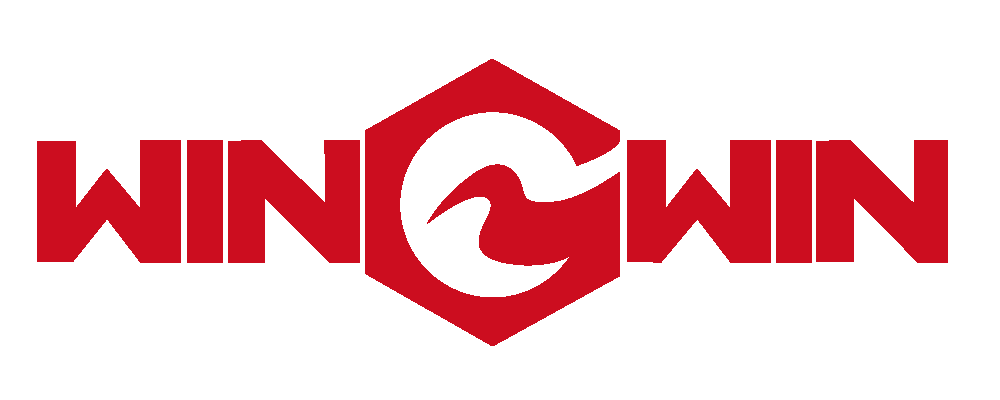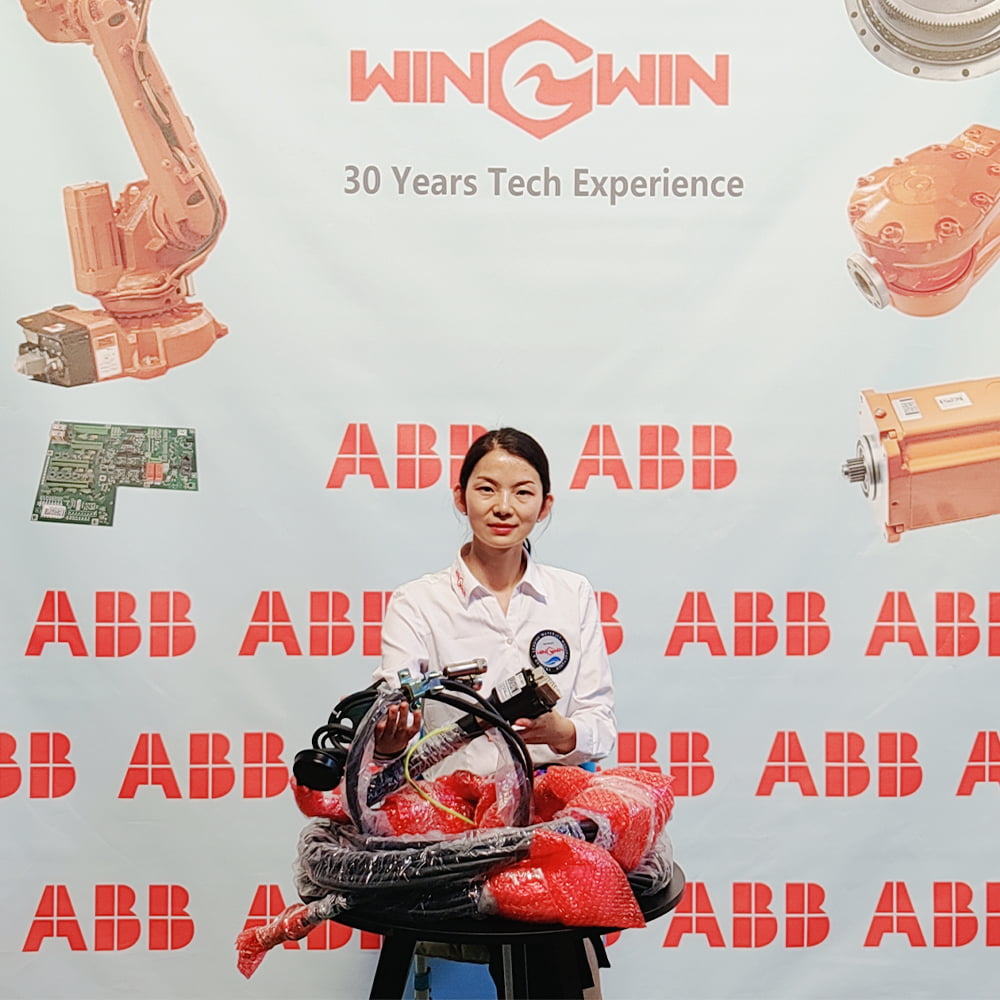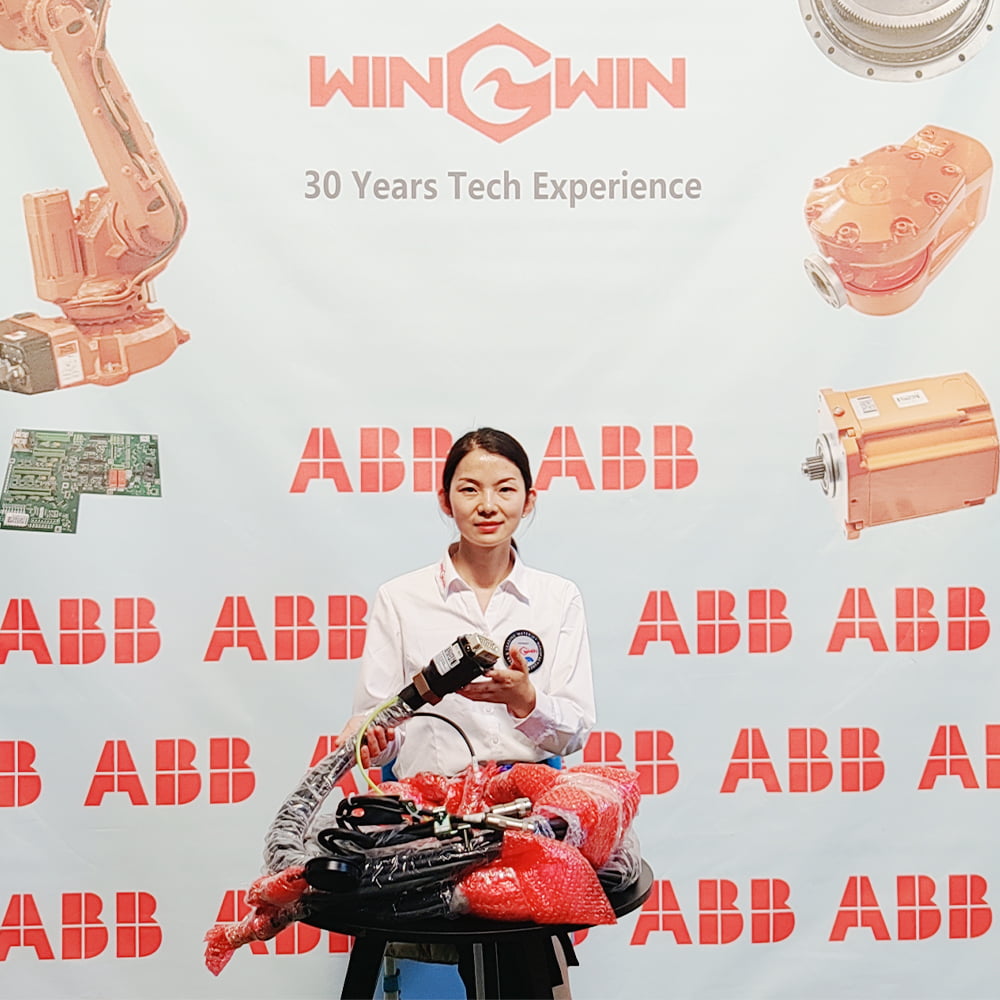Descrição
ABB Robotics Spare Parts
Item number: 3HAC069663-001
Item name: Cable
Detalhes: used on the ABB robot arms
Win-Win provide robot waterjet solutions, robot waterjet cell parts, etc.
Related robot waterjet cutting workstation & ABB robotics spare parts:
Robotic waterjet cutting system & Robot Waterjet Cell Parts: Yaskawa robotic waterjet workstation and related parts, Fanuc robotic waterjet workstation and related parts , ABB robotic waterjet workstation and ABB robotics spare parts.




FAQ of platform waterjet machine & robot waterjet system & ABB robotics spare parts:
A. How much does it cost to run a robotic water jet cutting machine? How much water and electricity is needed?
The cost of running a robotic water jet cutting machine involves a number of aspects, including the cost of equipment acquisition, installation, maintenance, energy, abrasives, water, and other consumables. In order to provide you with a complete answer, I’ll break down the various considerations, but please note that the exact cost will vary depending on the specifications of the equipment, the region, the price of water and electricity, the frequency of use, and other factors.
Equipment purchase and installation: this is a one-time upfront cost. The possible cost of a quality robotic waterjet cutting system may range from $100,000 to several million dollars, depending on the size, brand, and features of the machine.
Maintenance: This includes regular machine inspections, parts replacement and upkeep. This is an ongoing cost, but relatively low.
Energy:
ELECTRICITY: Water jet cutting machines, especially high-pressure pumps, require a lot of electricity. You may need to consider the power consumption per hour, which is usually between 20-50 kilowatt hours (KWh) depending on the size of the machine.
Water: The water consumption of a water jet cutting machine depends on the working pressure and the size of the nozzle, but is usually in the range of 3.8 to 15.1 l/min (1 to 4 gpm).
Abrasive: If using abrasive waterjet cutting (usually for hard materials), you will also need to purchase an abrasive such as quartz sand. The amount of abrasive consumed depends on the material being cut, the thickness and the desired cutting speed.
Other consumables: this includes nozzles, seals and other parts that need to be replaced periodically.
Wastewater treatment and recycling: In some areas, wastewater may need to be treated before it can be discharged, or a water recycling system may be considered to reduce water consumption.
Labor costs: This includes operator wages and training costs.
Finally, keep in mind that electricity and water costs can vary greatly from region to region, so these factors need to be considered when evaluating operating costs. To get the most accurate cost estimate, it’s best to contact the equipment supplier or manufacturer directly and get detailed information about energy and water rates in your area.
B. How to decide whether to use abrasive for robotic water jet cutting machine?Which abrasive is better?
Whether or not a robotic water jet cutting machine uses an abrasive during the cutting process depends largely on the type and thickness of the material to be cut, as well as the desired cutting speed and quality. Below are a few of the main factors that determine whether or not to use an abrasive:
Hardness of the material: Pure water jet cutting (without abrasive) is mainly suitable for softer materials such as rubber, foam, food, paper, etc. For hard materials, such as metals, stone, ceramics, and hard plastics, better cutting speeds and quality are usually achieved with abrasive waterjet cutting.
Thickness of material: For thicker materials, the use of abrasives can improve cutting speed and efficiency.
Cut Quality: Abrasive waterjet cutting typically provides smoother and more precise cut edges, especially for hard and thick materials.
Economic considerations: Using an abrasive will increase running costs, but may save cutting time, so there is a trade-off between time and material costs.
As to which abrasive is better, it depends on the specific application and need. Here are a few commonly used abrasives:
Garnet: This is the most commonly used abrasive because it is relatively inexpensive and reliable. It is usually suitable for most routine cutting applications.
Corundum (Aluminum Oxide): Corundum is harder than quartz sand and provides higher cutting speeds and quality, but is also more expensive.
Wire Cutting Abrasives: This type of abrasive is used in certain specialized applications, such as when higher cut quality or special surface finishes are required.
Other abrasives: Other abrasives such as glass beads or other special materials are sometimes used, depending on the needs of the application.
The choice of abrasive depends on the material to be cut, the quality of the cut required, economic considerations and other factors. It is recommended that the supplier or manufacturer of the water jet cutting machine be contacted to determine the type of abrasive best suited for a particular application.
We are the supplier of waterjet cutting machine, robot waterjet workstation and also related ABB robotics spare parts etc. If you are looking these products, welcome to leave us message, we will get back to you asap.
To learn more about Win-Win Waterjet cutting products, please access the following links:
https://www.youtube.com/channel/UC-D9PKZlhw2fZhMnnzefcgQ/






